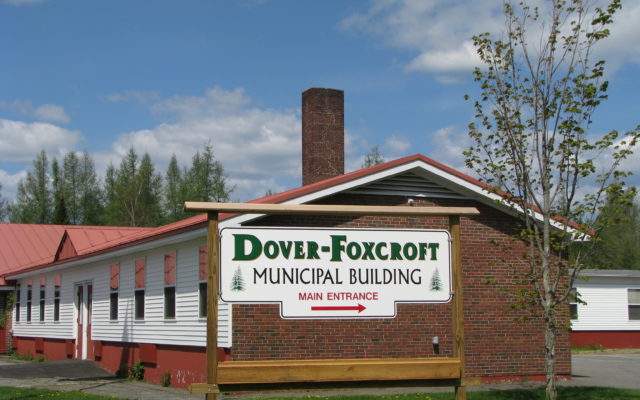
Warrant signed for April 27 D-F annual town meeting
DOVER-FOXCROFT — At 9 a.m. on Saturday, April 27 residents will gather in the Morton Avenue Gym to vote on an 8-item annual town meeting warrant. The warrant was formally signed by the select board during an April 9 meeting, with the document to be posted in the near future.
The total budget OKed on April 27 will be moved to the Tuesday, June 11 referendum for final approval.
In February the select board was told the year to year difference in appropriations is a $1,439,805 increase (20.99 percent), and the year to year difference in revenues to offset the tax commitment is up $852,608 (12 percent). The increase in the amount to be raised in the total tax commitment, provided there is no change in Dover-Foxcroft’s share of the RSU 68 budget, is $617,257 (9.14 percent) more. There is not projected to be a mill rate increase given the increase in state valuation from 2023 to 2024.
Also that month the board voted to accept a recommendation from the Mayo Mill Dam steering committee that removing the dam and connecting facilities and building a riverfront park is in the town’s best interests moving forward.
Reducing flooding dangers, improving the area’s ecology, including fish passage, and the availability of funding for dam removal were among the main reasons for the committee’s conclusion. The board voted in February to place a question on the June referendum ballot pertaining to the project concerning the acceptance of grant funds as a way to gauge if residents favor the plan or not.
A 4-page, approximately 1,600-word resolution explaining in detail the issues of the dam, with historical context of the recent process and reiterating the Feb. 26 vote was approved by the select board on March 25. The June referendum question, explaining what yes and no votes mean, was also approved at the meeting following an executive session.
During public comment on April 9 resident Jake Arno asked for an explanation on the dam referendum question concerning funding available for removal of the structure but local taxes cited as the source of funding for repairs.
The resolution states the select board ultimately voted to accept the recommendation of the steering committee recognizing the varying economic, social, and environmental factors at stake across the range of options, but ultimately concluded that removal of the Mayo Mill Dam presented the most responsible option in the best interests of the community based on technical, legal, and economic considerations.
The document says removal would cost between $6 and $6.5 million with grant funds while fixing the structure to be in compliance with FERC regulations would be $7.5 to $8 million with local taxes as the funding source. Both options are explained in detail in the warrant article explanatory note.
“We found a number of sources for dam removal,” Select Chair Tom Lizotte said. “The short answer is there’s lots of grant money available to remove the dam and restore the river to its natural state and its original banks but there’s not much money if any available to repair the dam.”
He said there are FEMA funds for dams deemed as high hazards or being in immediate danger of failure, but the Mayo Mill Dam does not meet either criteria — hence why removal is being recommended.
Arno mentioned the Piscataquis County Ice Arena and Jim Robinson Field House were both constructed without taxpayer monies and wondered why the dam could not be repaired in this manner. “There are other ways to fund this other than grant money,” he said.
Select Vice Chair Cindy Freeman mentioned a time crunch “because we have to make a decision about the dam and take care of it in order to be free from sanctions by FERC and in order to move forward with following the law with the Endangered Species Act.”
She said a funding window “won’t be open forever and then it would be harder to identify where funding would come from.”
Selectperson Steve Grammont said the Libra Foundation funded the Piscataquis County Ice Arena. This was done for a purpose, an economic resource for the region, and someone would need to provide funding to repair the dam for a similar reason. He said no one has come forward to redevelop the hydroelectric capabilities in the last decade and a half-plus, as this is not considered to be economically feasible.
“There are no guarantees but there are some good chances vs. some really poor chances,” Lizotte said about funding for dam removal compared to repair.
“They have confidence in finding the funding,” Freeman Cyr mentioned about project partners – such as the Atlantic Salmon Federation and The Nature Conservancy.
“It’s the only method for trying to get the money and that’s what the townspeople need to realize,” Grammont said about a June 11 yes vote. “Nobody’s going to go out and find the money if we don’t ask them to.”
If approved in June and grant funds are able to be secured, the dam project would follow a 6- to 8-year timeline. There would be a needed detailed project design that would take about a year to complete. There also would be a funding search with project partners looking into various sources.
The steering committee looked at the dam site at the present time with the potential millions of dollars in funding opportunities for revitalization as part of the larger downtown. Dover-Foxcroft is working on adjacent projects concerning vehicle movement and pedestrian access for sustainable long-term solutions. There is also money available to mitigate the flood issues caused by the dam.